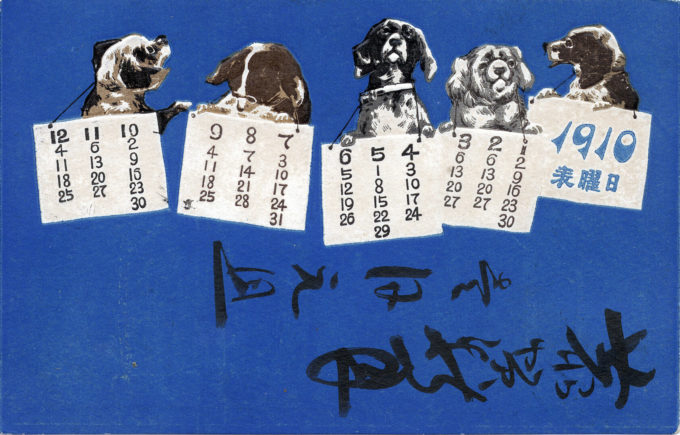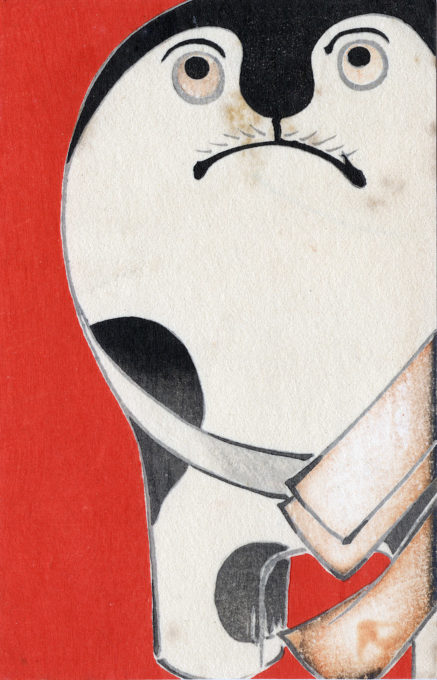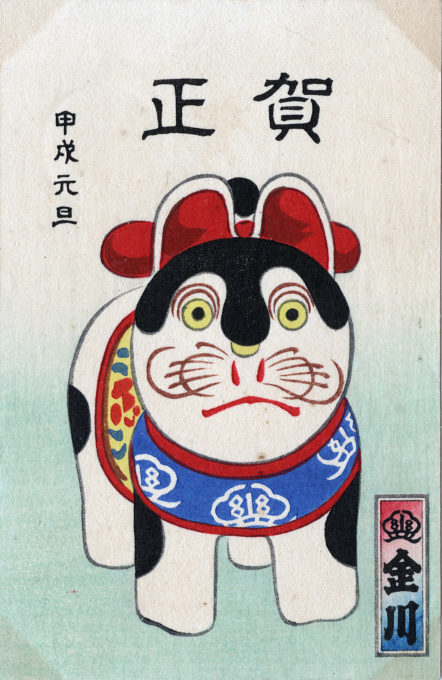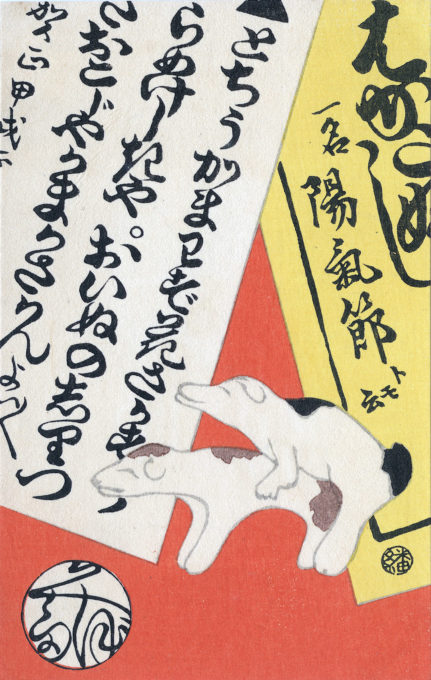“The dog is the eleventh symbol in the Japanese zodiac. Legend has it that the dog had a fight with the monkey on their way to God and the rooster had to act as a peacemaker, so they arrived in a row.
“Inu doshi [Year of the Dog] represents ‘diligence’ and ‘devotion’. Dogs are patient, strong-willed, and honest. They have a sense of duty and loyalty, and always strive to succeed. However, they are also very stubborn, and do not like to admit their own faults.
“Dogs are compatible with tigers and horses. If these three come together, it generates a great positive power. Dogs also have a mutually beneficial relationship with rabbits. Dragons are the least compatible with dogs.”
– Japanese Zodiac website
Born 2030, 2018, 2006, 1994, 1982, 1970, 1958, 1946, 1934, 1922, 1910.
See also:
Akemashite Omedetou, Happy New Year, c. 1910
Dezome-shiki, New Year’s Day, c. 1960
Akasaka Mitsuke, New Year’s Greetings, 1909
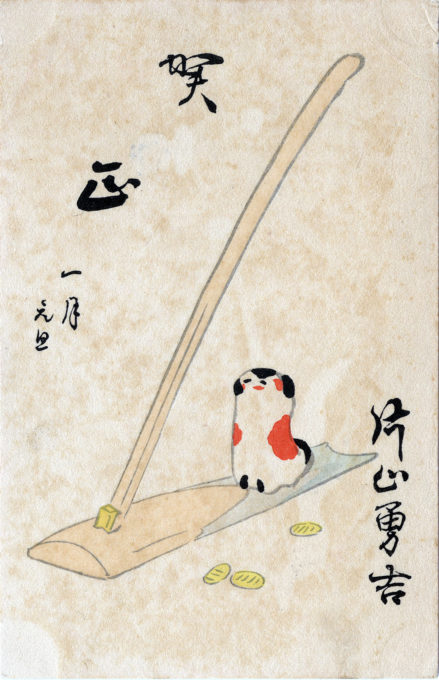
“Year of the Dog”, New Year’s postcard, 1922. In Japanese, a dog is “inu” in Romaji and is written as “犬” in kanji. In the Japanese Zodiac, however, it is written as “戌”.
“We should also count the dogs among the inhabitants, as they are maintained like citizens.
“… The streets are full of these rascals, which move neither for horses nor for people. If they harm people or deserve to die, only the executioner may kill them on command from high authority. Sick dogs, or those incapacitated by age, are maintained by each street in cages or huts. When the dogs die, they are carried up the mountains and buried no less carefully than people. This is done on the superstitious command of the shogun [Tokugawa Tsunayoshi], who was born under the sign of the dog, and consequently esteems them no less than Emperor Augustus did the ibex.
“A certain farmer laboriously carrying his dead dog up the hill complained to his neighbor about the year of birth of the shogun, which was responsible for his pains. The other replied: ‘Oh, my friend, don’t let’s complain. If he were born under the sign of the horse, our load would be much heavier!'”
– Kaempfer’s Japan: Tokugawa Culture Observed, by Engelbert Kaempfer, 1727 (translated 1999)
- “Year of the Dog”, New Year’s postcard, 1934.
- “Year of the Dog”, New Year’s postcard, 1934.
“The dog is the symbol of the 11th year of the Japanese Zodiac.
“The dog is a friendly character in Japanese stories, folklore, and literature – a beneficent and protective character – only rarely, as in China, a demonical character.
“In the so-called Japanese fairy tale, Momotaro, or Little Peachling, a dog is one of Momotaro’s faithful companions and aids in the successful campaign against the ogres. In another tale, The Old Man Who Made Dead Trees, this miracle was accomplished through the instructions of the ‘Old Man’s’ pet dog, which in anger had been killed by a spiteful neighbor, and which appeared to the old man in his dreams.
“In many cases and places the dog is really a sacred animal. The dog, for instance, is the only animal admitted on Koya-San, south of Nara, where is situated the head temple of the Shingon sect of Buddhism. In the Harima mountains there is a Buddhist temple call Inu-dera (‘Dog Temple’), and there are other shrines to dogs in various places. And the dog, Koma-Inu, together with the lion, guard the entrance to many temples and shrines in Japan.
“… One of the most common toys in Japan is a papier-mache dog, which is considered the perpetual protector of little children, and, when handing above their heard, is said to make them stop crying – and the words, inu-no-ko, inu-no-ko (‘puppy, puppy’) are beleived to make a Japanese baby quiet when it cries in its dreams. Moreover, the placing of the ideograph for dog (犬) upon a child’s forehead is done to drive away the demons of disease.”
– We Japanese: The Customs, Manners, Ceremonies, Festivals, Arts and Crafts of Japan, by Frederic de Garis & Atsuharu Sakai, Miyanoshita Fujiya Hotel, 1936


